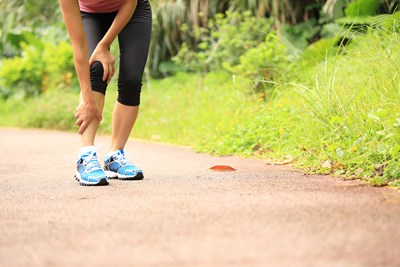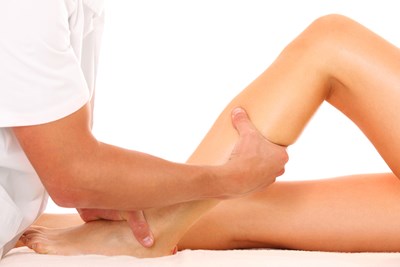Shin splints are a problem that commonly affects athletes. They are defined as acute pain in the shin and lower leg that is caused by overuse of the shinbone or tibia, which is the large front bone in the lower leg. There are more than 3 million cases of shin splints each year in the United States.
Shin splints are most common among runners, dancers, and military trainees. However, any activity that requires sudden starts and stops will increase your risk for getting shin splints, as will running downhill or on uneven terrain. Muscle weakness, lack of flexibility, and improper training techniques can all increase your likelihood for developing shin splints. If you have flat feet or rigid arches, you are naturally more inclined to develop shin splints during physical activity.
In order to prevent this problem from occurring, you have to address any risk factors you have that can increase your chances of getting shin splints. Here are some steps you can take to avoid getting shin splints in the future:
- Wear shoes that fit well and that offer good support: Wearing inappropriate shoes for running or working out can increase your risk for developing shin splints during physical activity. If you are a runner, you should replace your shoes after every 350 to 500 miles.
- Use shock-absorbing insoles: This will lessen the impact of running on your shins.
- Consider using arch supports if you have flat arches in your feet: This can help prevent the pain of shin splints if you regularly engage in activities that require a lot of running.
- Look into cross-training: Try new activities in conjunction with your regular routine that will place less impact on your shins. This could include swimming, walking, or biking. When beginning new activities, start slowly and increase time and intensity at a gradual pace.
- Avoid exercising on hard surfaces or uneven terrain: Running downhill can especially increase your risk for developing shin splints.
- Try running barefoot: Removing your shoes might help lessen the impact of running on your shins. Though this technique won’t work for everyone, it can decrease the pain of shin splints in some people.
- Make sure to properly stretch before exercising: This warms up the muscles in your legs so they aren’t so tight while you are running.
- Engage in strength training: In addition to your normal routine, start to gradually add in some exercises that will strengthen the surrounding muscles in your leg. For example, to strengthen your calf muscles, try toe raises. This involves slowly rising up on your toes and then slowly lowering your heels to the floor and repeating. As this gets easier, you can try holding weights while performing this exercise to increase your calf strength. There are other exercises that might be helpful for this purpose, such as leg presses.
- Don’t try to run through the pain: If you do start to feel pain in your shins while exercising, give yourself a break. Shin splints are usually able to heal quickly with rest, ice, and over-the-counter pain relievers. However, if you don’t allow yourself time to heal, the pain will only worsen and might result in a stress fracture.




